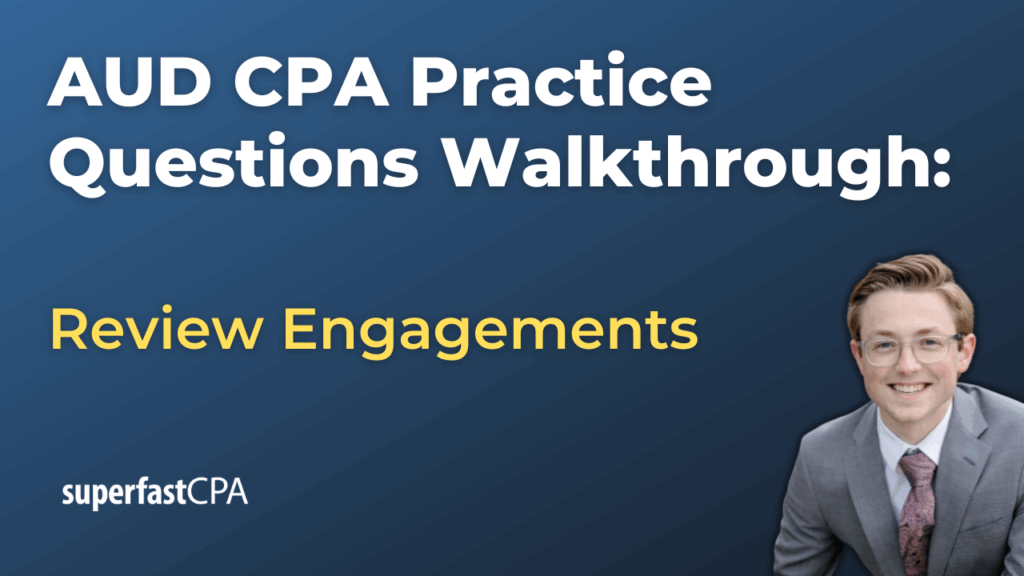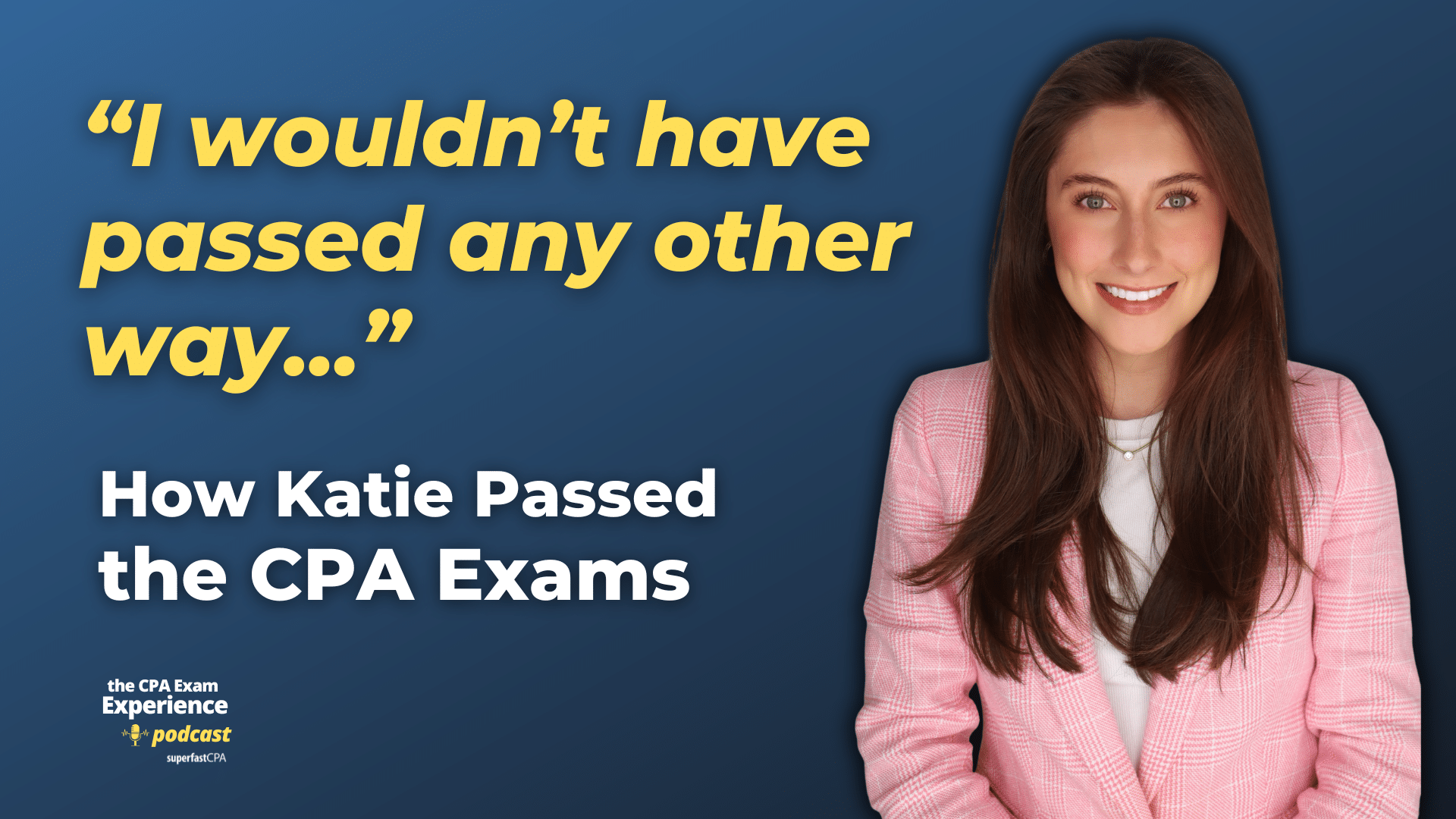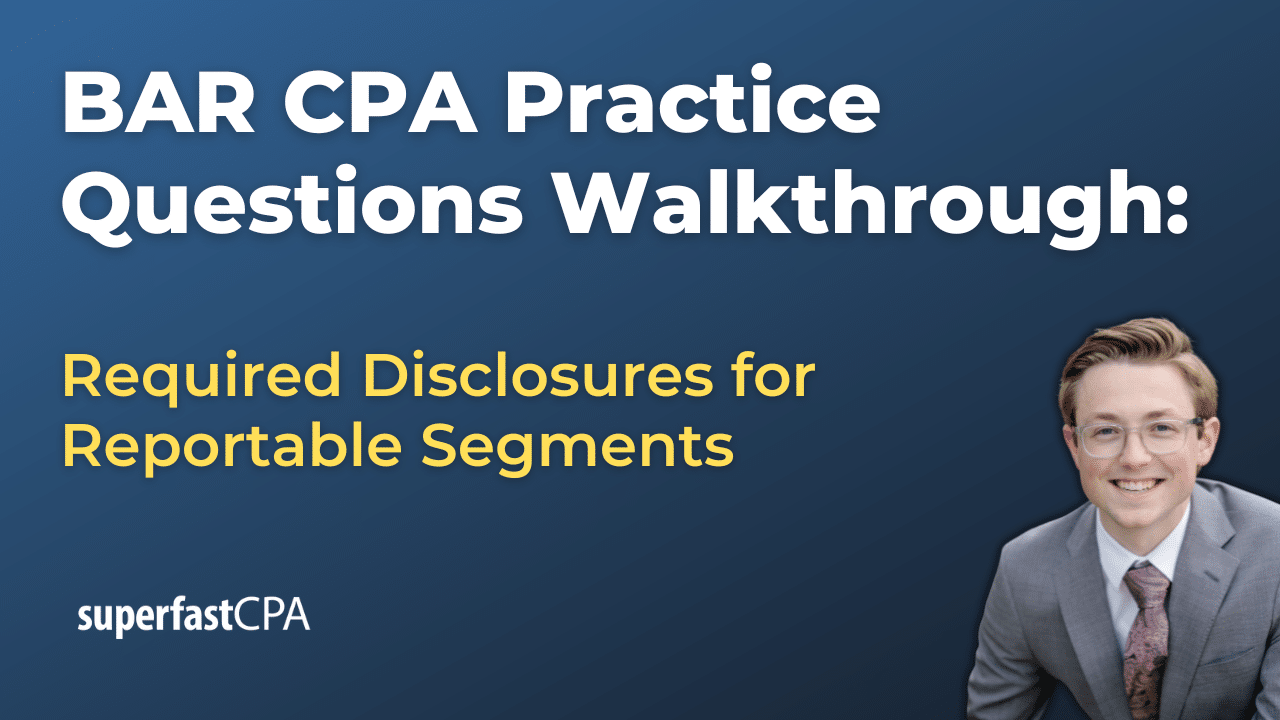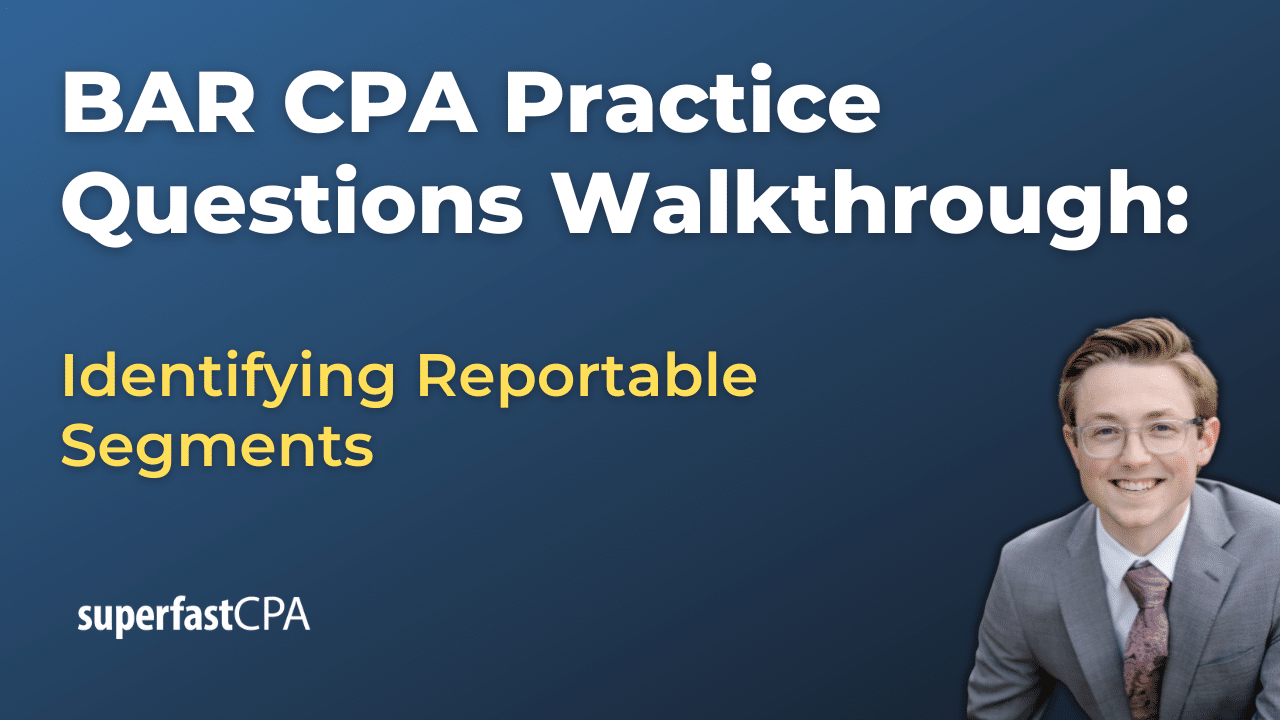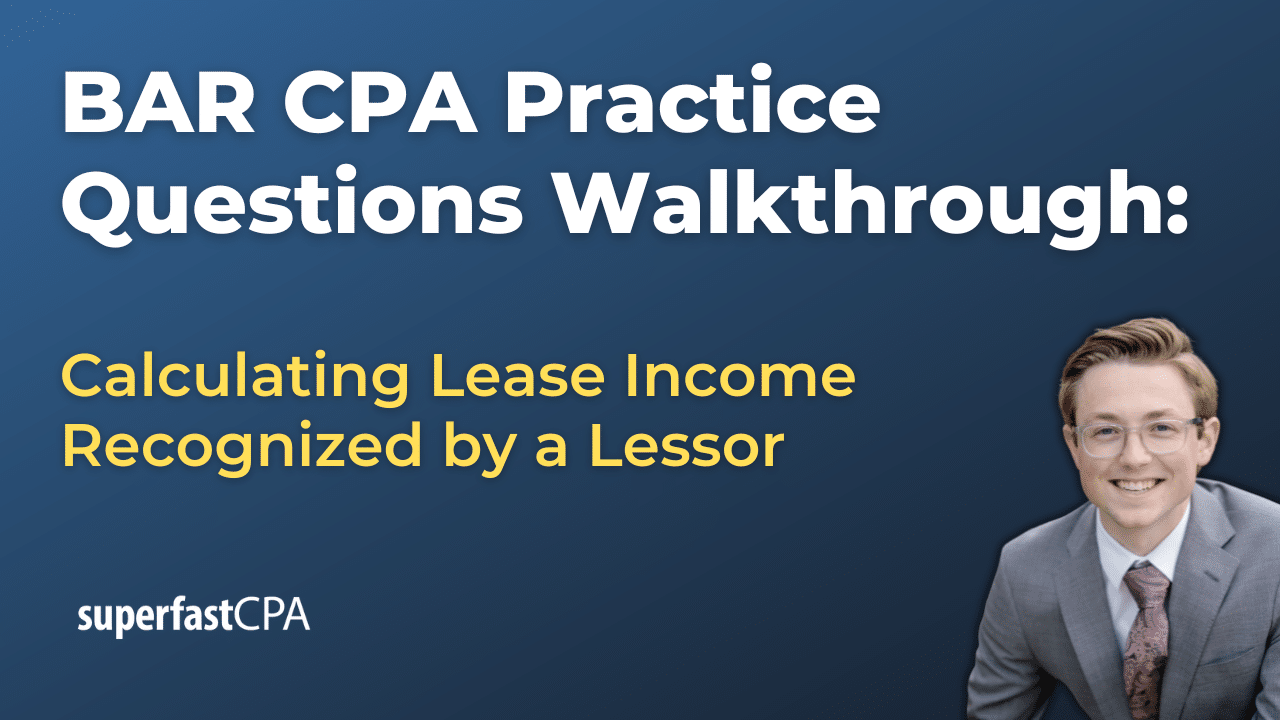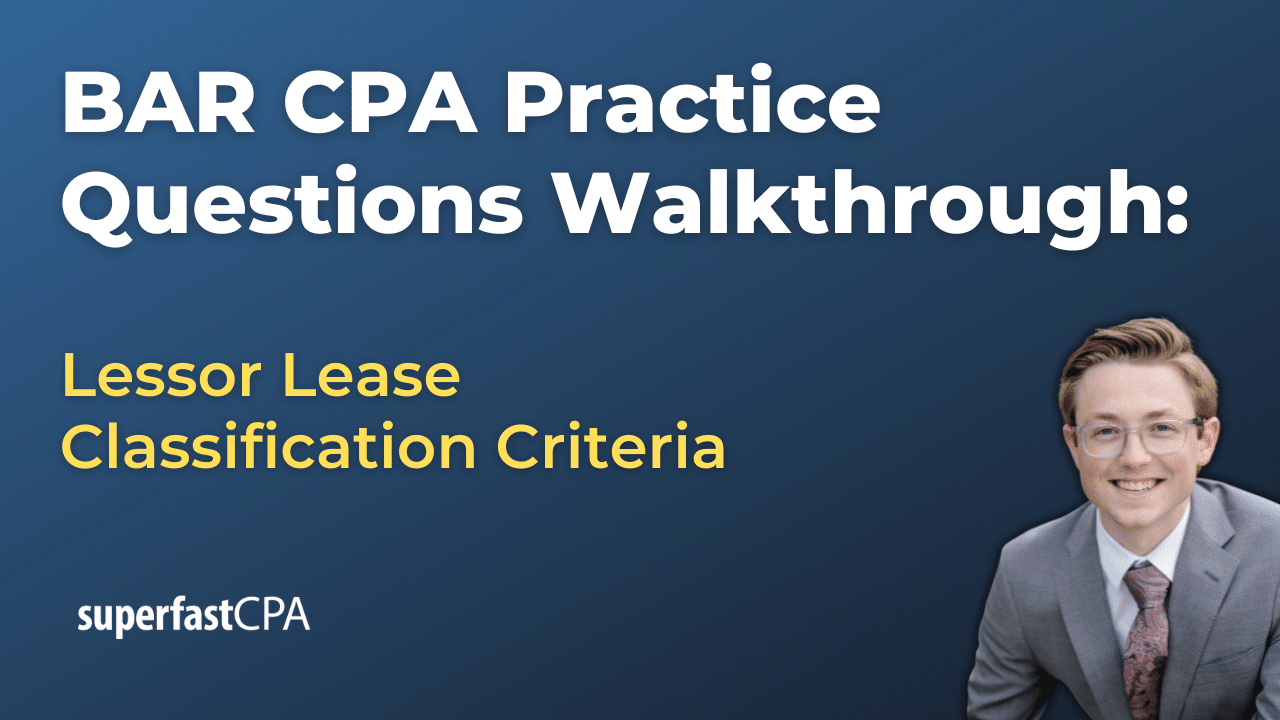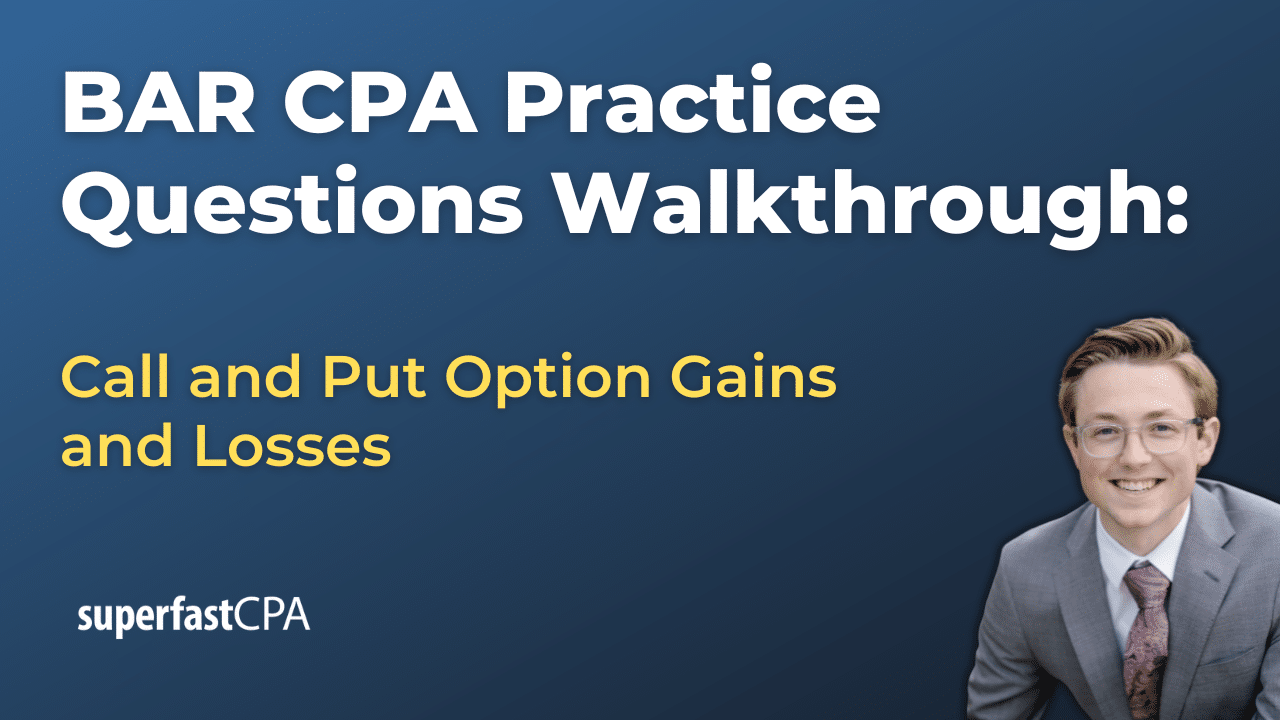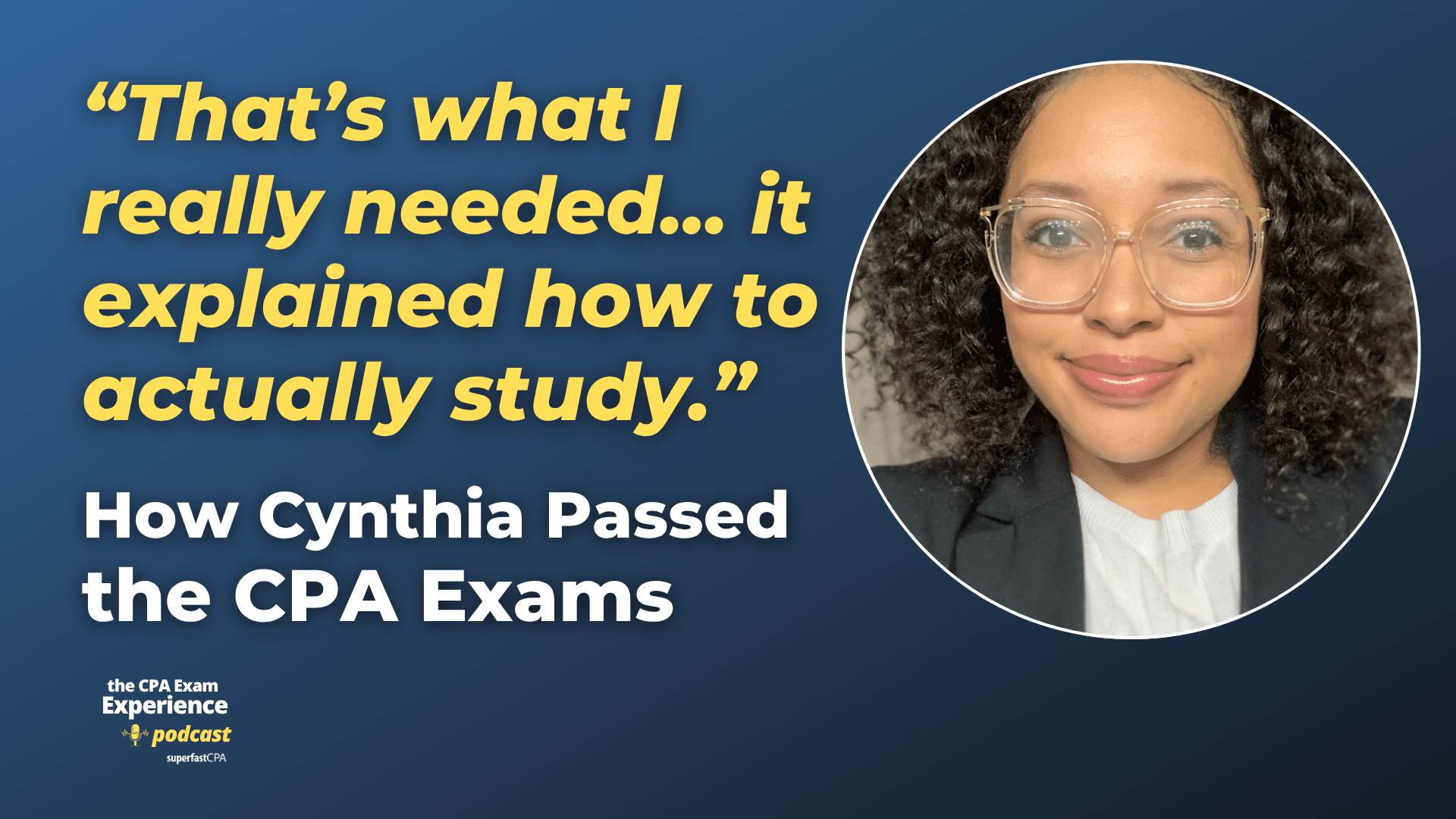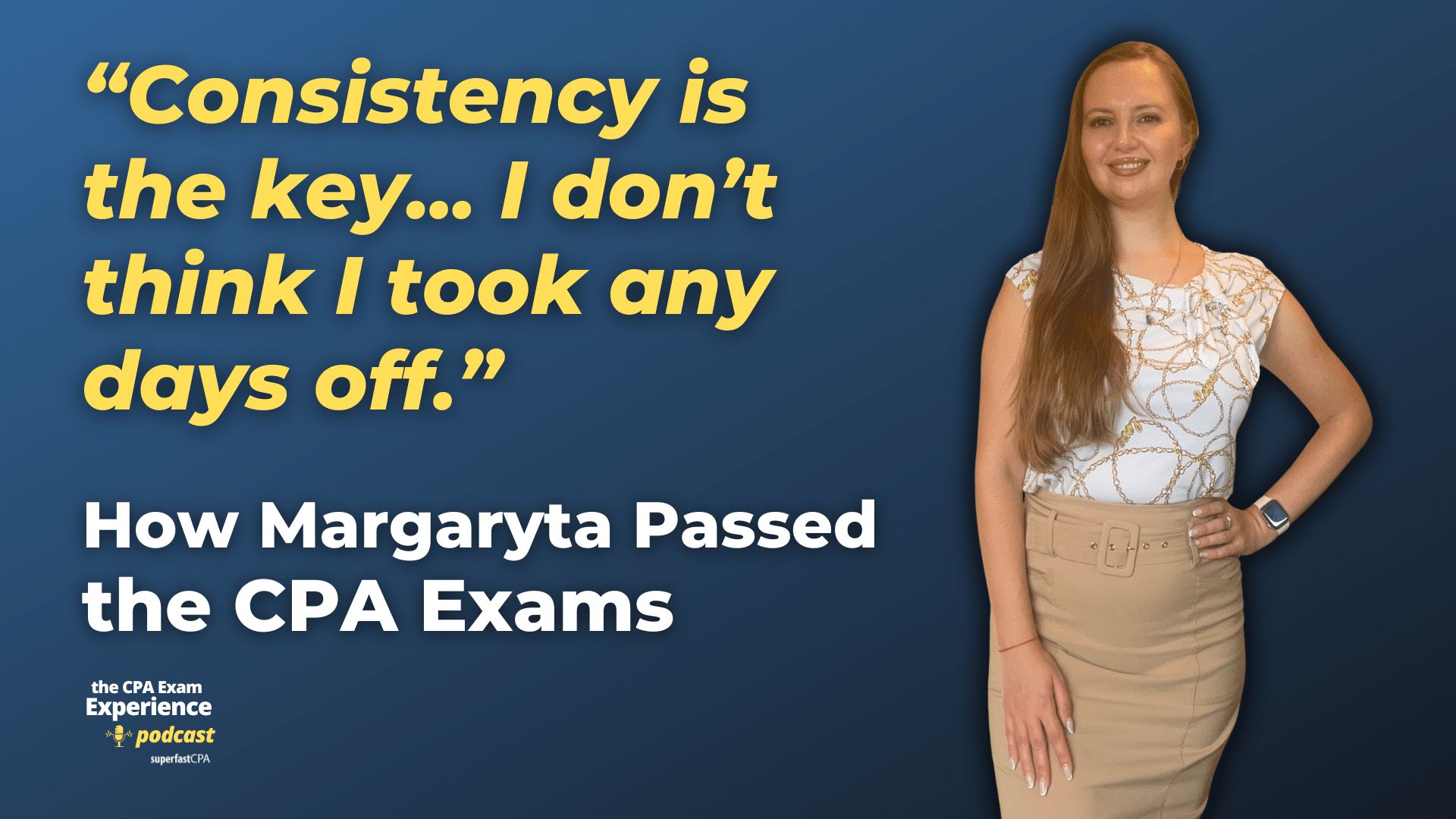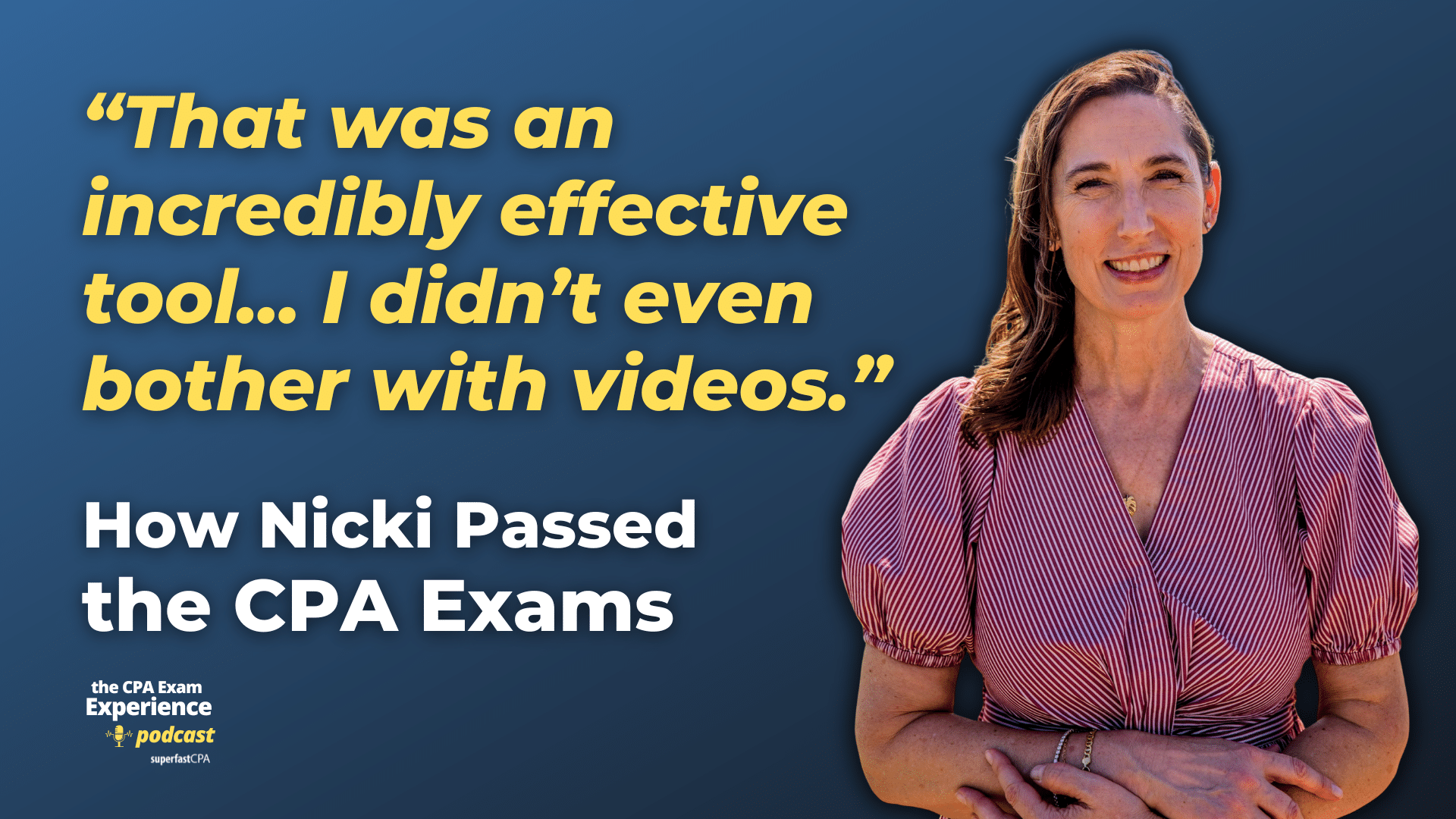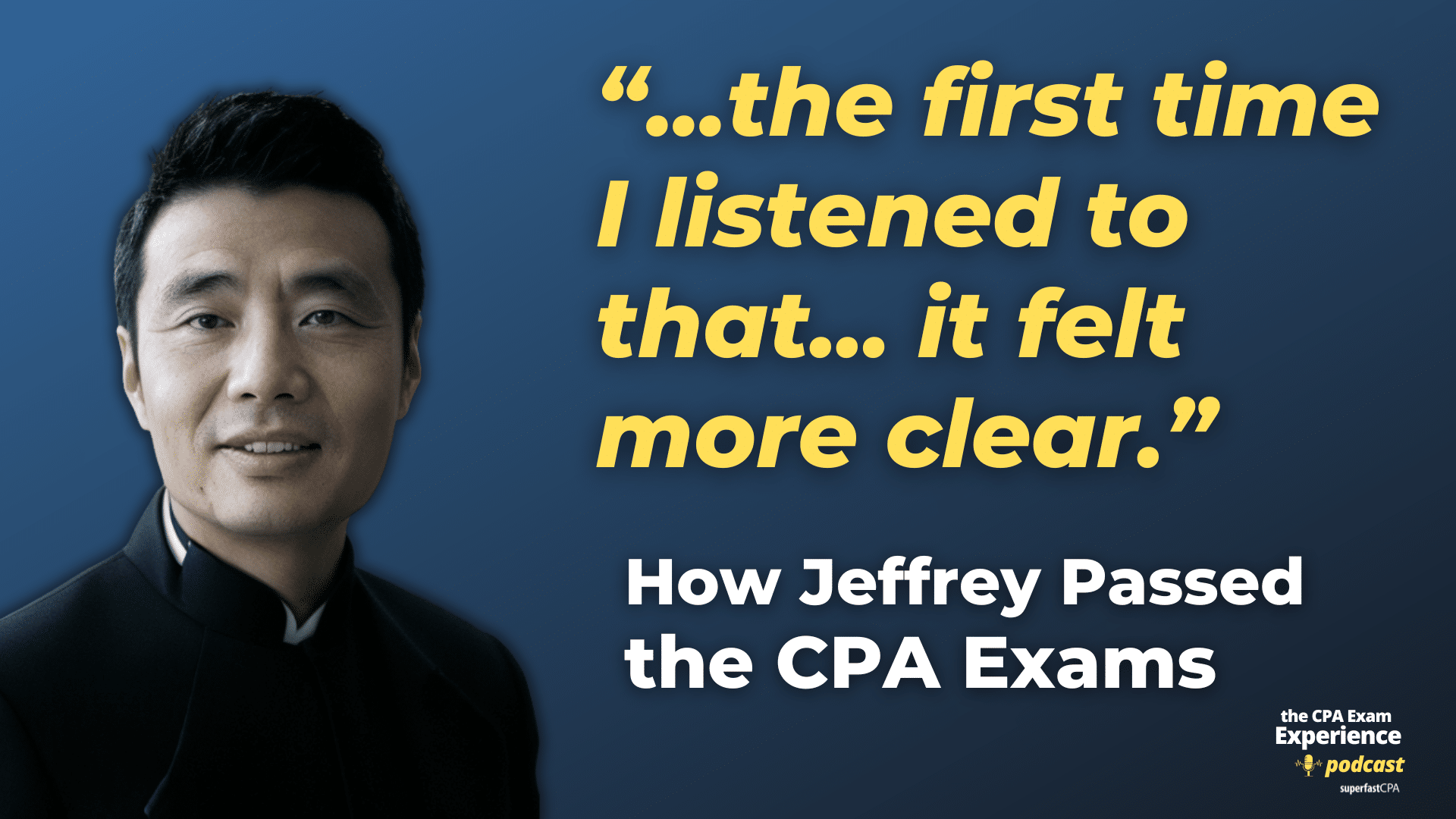In this video, we walk through 5 AUD practice questions teaching about review engagements. These questions are from AUD content area 4 on the AICPA CPA exam blueprints: Forming Conclusions and Reporting
The best way to use this video is to pause each time we get to a new question in the video, and then make your own attempt at the question before watching us go through it.
Also be sure to watch one of our free webinars on the 6 “key ingredients” to an extremely effective & efficient CPA study process here…
Review Engagements
When an accountant undertakes a review engagement, they are expected to provide limited assurance about whether the financial statements require material modifications. This is not an audit—there’s no opinion on whether the financials are presented fairly in accordance with GAAP. Instead, the focus is on analytical procedures and inquiries, and the report must clearly communicate the scope and outcome of the work performed.
Below are the key factors an accountant should consider when planning, performing, and reporting on a review of financial statements.
Nature and Scope of Review Engagements
A review engagement provides limited assurance that no material modifications are needed to bring the financial statements into conformity with the applicable financial reporting framework.
This level of assurance is significantly less than that of an audit. While an audit includes detailed testing of transactions and evaluation of internal control, a review is limited to:
- Performing analytical procedures to identify unusual trends or inconsistencies
- Making inquiries of management regarding the entity’s financials, operations, and accounting practices
For example, an accountant might compare the company’s gross profit margin from the current year to the prior year or to industry averages. If the margin has significantly increased, the accountant may ask management to explain the cause (e.g., increased pricing, reduced costs, or changes in product mix).
Exclusion of Audit-Level Procedures
An accountant should understand which procedures are excluded in a review engagement. This includes:
- No inspection of supporting documents (e.g., invoices, contracts)
- No observation of processes (e.g., inventory counts)
- No third-party confirmations (e.g., confirming accounts receivable)
- No assessment or testing of internal controls
These exclusions must be clearly understood and communicated. For instance, the accountant would not test a sample of revenue transactions or assess control effectiveness over revenue recognition. Attempting to do so would exceed the scope of a review and enter audit territory.
Review engagements do not require the accountant to obtain corroborating evidence of the information provided. This limitation is emphasized in the review report, which typically states: “A review is substantially less in scope than an audit.”
Independence and Required Representations
Independence is a fundamental requirement in a review engagement. An accountant must be independent in both fact and appearance.
- Even an immaterial direct financial interest in the client impairs independence.
- A lack of independence prohibits the accountant from accepting or continuing the engagement.
Additionally, the accountant is required to obtain written representations from management. These representations:
- Must cover all financial periods being reported on
- Confirm management’s responsibility for the preparation and fair presentation of the financial statements
- Include affirmations that all known matters relevant to the financials have been disclosed
If management refuses to sign the representation letter, the accountant must withdraw from the engagement. The absence of such a letter means the accountant cannot issue a review report.
Example: If management declines to provide written representations regarding subsequent events or related party transactions, the accountant cannot proceed and should disengage.
Addressing GAAP Departures and Conditions for Withdrawal
Accountants must evaluate whether the financial statements are in accordance with the applicable financial reporting framework, such as GAAP. If departures exist:
- The accountant may modify the report to disclose the departure, provided the issue is not pervasive
- If the financials are materially misstated and cannot be modified to communicate the issue clearly, the accountant should withdraw from the engagement
Example: Suppose the entity fails to consolidate a material subsidiary as required under GAAP and refuses to make adjustments. If the omission is material and pervasive, the accountant may determine that modifying the report is not enough and should withdraw.
It’s important to note that a GAAP departure doesn’t automatically lead to withdrawal—withdrawal is a last resort when the issue cannot be addressed adequately through report modification.
Proper Documentation and Communication
Accountants must maintain sufficient documentation to support the work performed and the conclusions reached in a review engagement. This typically includes:
- The signed engagement letter outlining the scope and terms of the review
- A description of the analytical procedures performed (e.g., ratio analysis, trend comparisons)
- Notes or summaries of inquiries made to management
- The signed representation letter from management
- A copy of the final review report
Documentation should align with the procedures required for a review and should not include elements of audit evidence. For example, there would be no confirmations, testwork, or control walkthroughs included.
In addition, the accountant must ensure that each page of the reviewed financial statements includes a reference such as: “See Independent Accountant’s Review Report.” This helps distinguish the financials as having been subject to a review, not an audit.
Example: A reviewed balance sheet page should include a footer stating, “See Independent Accountant’s Review Report,” to avoid misleading users into thinking it was audited.
Review engagements are structured to provide limited assurance based on relatively lightweight procedures. While they are less extensive than audits, they still require careful planning, clear communication, and adherence to professional standards. Accountants must ensure their independence, understand the procedures allowed, and know when to withdraw if conditions aren’t met.

